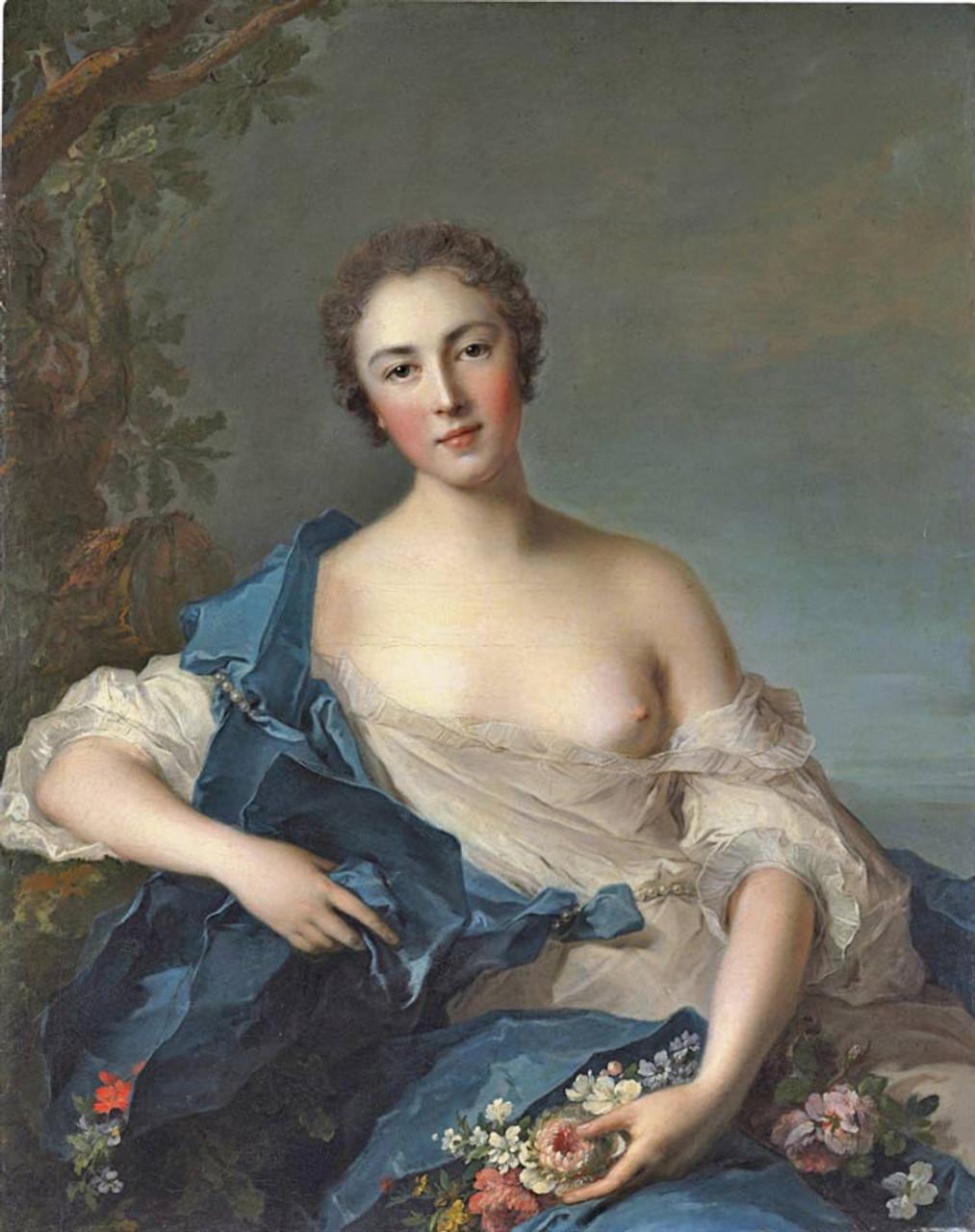Pauline Félicité de Mailly-Nesle, Marquise de Vintimille's greatest claim-to-fame was that she was one of four sisters that Louis XV took as his mistresses. She occupied that particular place in the late 1730's; at this point she had taken up residence at court with Madame de Mailly, her sister and the king's maitresse-en-titre.
At court, she was not a popular figure. Unlike her sister, the Comtesse de Mailly, she was anything but mild and disinterested. Rather, she was remarked for her avarice as well as her ambition and sharp wit; naturally, this made her a threat to the other courtiers who grew to resent her. Despite this opposition, her royal favour was as high as ever in 1741 when she announced that she was expecting a child.
No one doubted that the king was the father of the child. Louis XV had arranged for her to marry the Marquis de Vintimille who had been obliging enough to retire to his country estate after their wedding. As the summer and her pregnancy advanced, the marquise's health suddenly deteriorated. On 11 August, she fell ill at Choisy with what was termed rather vaguely as a fever. Already two days later, her life was widely despaired of - the Comte d'Argenson, for instance, wrote with certainty that she was dying at Choisy.
 |
| Pauline Félicité |
While Pauline was lingering between life and death at Choisy, she found herself constantly attended to by the king himself. When he was not there personally, he sent four-five couriers per day. Finally, by 28 August, the sick lady was transferred - with the king - back to Versailles. She was still very ill and had to be carried on a litter. Once she arrived at the palace, she was lodged in the apartment belonging to the Cardinal de Rohan.
At last, on September 5, Pauline gave birth to a boy. She remained in the Cardinal's apartment were she received her royal visitor - and her sister - who came up to five times per day. However, it soon became clear that she was not recovering her health. Instead, she was ceased by so-called miliary fever.
Miliary fever was not common in France but had ravaged both the southern-European countries and England in the previous centuries. In England, it had been a particular problem during the Tudors where it was known by another name - the sweating sickness.
 |
| Louis XV, portrayed 7 years after the death of Madame de Vintimille |
As that name suggests, the patient would sweat copiously while the skin would be covered by tiny, liquid-filled vesicles or blisters. Over the next five days Pauline's condition worsened and she experienced severe compulsions. On the night between 9-10 September, she died.
The king was distraught at her death and even requested that her face be moulded in wax. This caused some problems as the convulsions had left her face in a rather unpleasant, contorted state. Nevertheless, with two strong persons holding the jaw shot, it was managed. Her body was removed to the Hôtel de Villeroy and subjected to an autopsy. Poison was suspected due to the rather suddenness of her death but nothing was found to suggest that her death had been unnatural. The only thing noted by the doctors was that the body was rapidly decomposing - which might have had something to do with the temperatures. As the body's state gave off unpleasant odors it was placed in a shed near the Hôtel de Villeroy in Versailles. Once they had taken it there, her attendants left it unprotected - to go drinking, apparently.
Shortly after, the people of Versailles found out that the king's late mistress was lying in their very centre and they descended on the shed. Madame de Vintimille had been just as unpopular with the people as she had with the court. The people - especially the villagers of Versailles - blamed her for keeping the king at Choisy and other royal residences which meant that he did not spend as much time at Versailles - and that cost them money.
Once the mob had located the body of Pauline, they began to desecrate it. Covered only by a shroud, the body was quickly uncovered. Some reported that it had served as a "play-thing" for the villagers, some of whom threw firecrackers on it. Again according to d'Argenson, they committed "all sorts of insults" to it - one can only imagine what that entailed precisely.
When the mob had finally sated their curiosities, they left. What remained of Pauline Félicité was buried in the chapel of Saint-Louis on the 10 September.

No comments:
Post a Comment